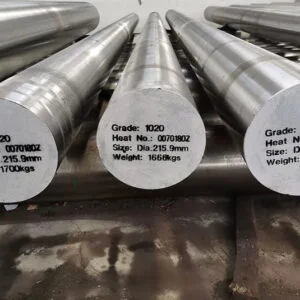Introduction

In the realm of metallurgy, the concept of durability stands as a cornerstone for innovation and progress. Among the myriad materials available, annealed steel emerges as a pivotal player, transforming the landscape of metal durability. This article delves into the profound impact of annealed steel, exploring its properties, applications, and the revolutionary advancements it brings to various industries.
Understanding Annealed Steel
Annealed steel, a form of steel subjected to controlled heating and cooling processes, undergoes a transformation that enhances its ductility, toughness, and overall mechanical properties. Through this meticulous annealing process, internal stresses are relieved, and the steel achieves a refined microstructure, granting it unparalleled durability and versatility.
The Science Behind Annealing
At its core, annealing is a thermal treatment method designed to alter the physical and chemical properties of steel. By heating the material to a specific temperature and allowing it to cool gradually, the crystalline structure of the steel is rearranged, mitigating defects and enhancing its structural integrity. This meticulous process ensures that annealed steel exhibits exceptional strength, resilience, and resistance to wear and fatigue.
Applications Across Industries
The versatility of annealed steel renders it indispensable across a myriad of industries. From automotive manufacturing to aerospace engineering, annealed steel finds applications in critical components such as engine parts, structural frameworks, and precision tools. Its superior durability and machinability make it a preferred choice for demanding environments where reliability is paramount.
Advantages of Annealed Steel
The adoption of annealed steel brings forth a plethora of advantages, revolutionizing the way we perceive metal durability. Not only does it prolong the lifespan of components, but it also facilitates intricate machining processes, enabling the production of intricate designs with utmost precision. Moreover, its resilience to corrosion and fatigue ensures long-term performance, reducing maintenance costs and enhancing operational efficiency.
Annealed Steel: A Comparative Analysis
To better grasp the significance of annealed steel, let’s conduct a comparative analysis with other conventional materials:

| Property | Annealed Steel | Conventional Steel | Aluminum Alloy |
|---|---|---|---|
| Tensile Strength | High | Moderate | Low |
| Ductility | Excellent | Limited | High |
| Machinability | Superior | Average | Good |
| Corrosion Resistance | High | Moderate | Moderate |
From the table above, it’s evident that annealed steel outperforms conventional steel and aluminum alloy in various aspects, making it a preferred choice for applications requiring optimal durability and performance.
Conclusion
In conclusion, the advent of annealed steel heralds a new era in metal durability, offering unparalleled strength, resilience, and machinability across diverse industries. Through meticulous annealing processes, steel undergoes a transformative journey, emerging as a formidable material capable of withstanding the rigors of demanding environments. As we continue to harness the potential of annealed steel, we pave the way for innovation, efficiency, and sustainable development in the realm of metallurgy.
FAQ
Q: What distinguishes annealed steel from other forms of steel?
A: Annealed steel undergoes a controlled heating and cooling process, which refines its microstructure and enhances its mechanical properties, distinguishing it from conventional steel.
Q: Can annealed steel be used in high-temperature applications?
A: Yes, annealed steel exhibits excellent heat resistance, making it suitable for high-temperature applications such as furnace components and exhaust systems.
Q: Is annealed steel more expensive than conventional steel?
A: While the initial cost of annealed steel may be higher, its superior durability and longevity often result in cost savings over the long term, making it a cost-effective investment.
Q: Are there any limitations to the use of annealed steel?
A: While annealed steel boasts exceptional properties, it may not be suitable for applications requiring extreme hardness or abrasion resistance, where specialized alloys may be more appropriate.
With these FAQs, we aim to demystify the nuances of annealed steel, providing clarity on its properties, applications, and potential limitations.
